10 Best Electric Cars in Australia - 2024 : Know Price, Specs & Features
It’s taken a while, but electric vehicles are finally finding their feet in Australia.
Owning an electric vehicle (EV) in Australia is becoming increasingly popular, as the country's charging infrastructure continues to improve. There are now a number of different EV models available in Australia, from small city cars to large SUVs. There are a number of benefits to owning an EV in Australia. First, EVs are much cheaper to run than petrol or diesel cars. The cost of electricity is much lower than the cost of fuel, and EVs also produce zero emissions, which can save you money on fuel excise.
A greener alternative is being preferred by all – albeit from a low base - and there are dozens of new models due soon. However, there are also plenty of best electric cars on sale right now, giving consumers a viable alternative to petrol and diesel powered cars that have kept us on the move. We have a list of the 10 best electric cars in Australia.
1. Tesla Model 3
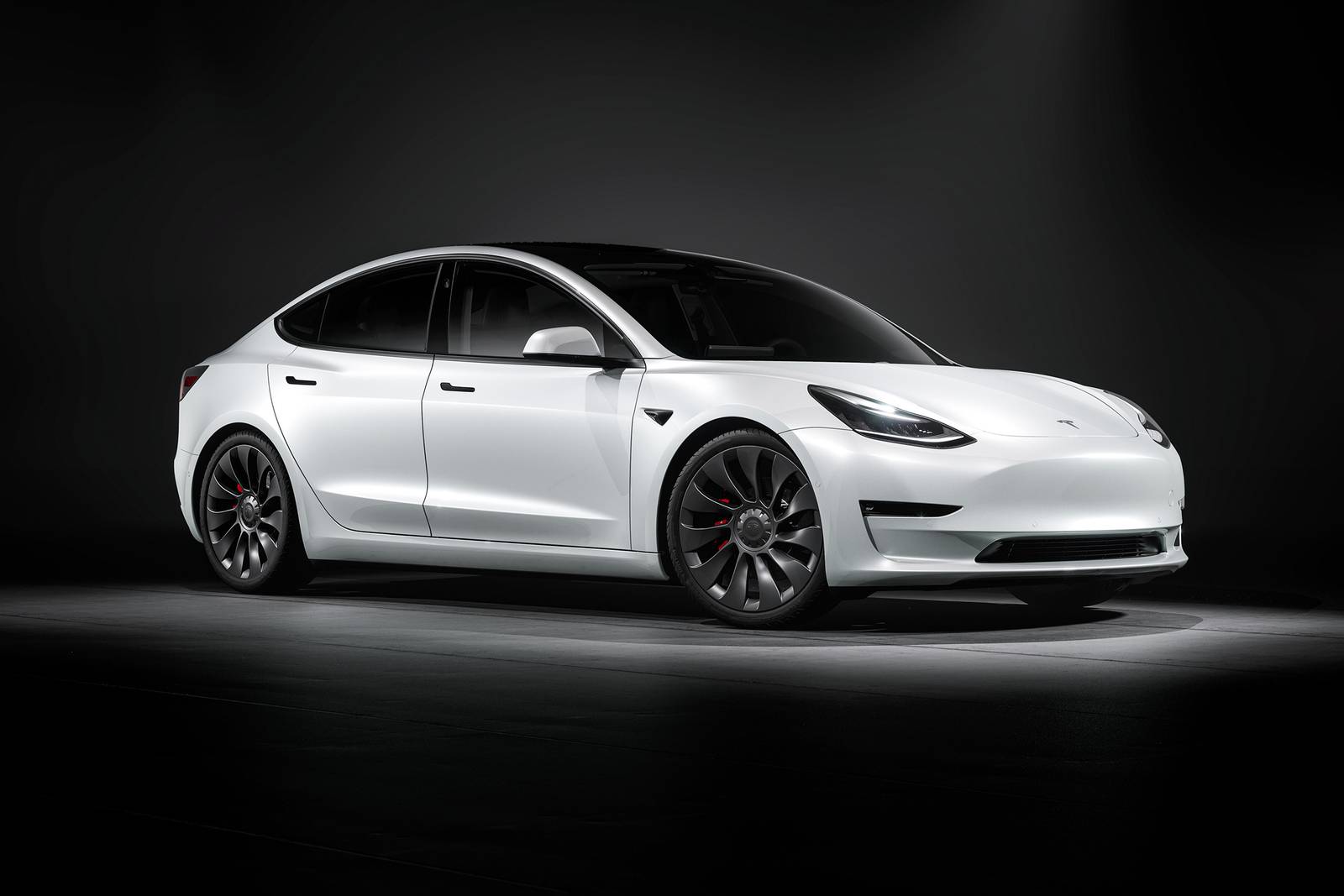
The Tesla Model 3, introduced in 2019, has quickly become the best-selling electric vehicle in Australia. Its popularity can be attributed to its competitive pricing, enjoyable driving experience, and innovative features that showcase the Tesla brand's wow factor. From customizable indicators that can produce amusing sounds to using your smartphone as a key, the Model 3 is not just a means of transportation but also a technological marvel.
One of the Model 3's strengths is its simplicity in the world of electric vehicles. Tesla owners have access to a comprehensive charging network, tailored specifically for them, along with a practical driving range of at least 400 kilometres. The Model 3 is offered in three variants, each at different price points. The base Standard Range Plus is rear-wheel drive, while the Long Range and Performance versions feature all-wheel drive capabilities, thanks to an additional electric motor. Regardless of the variant, the Model 3 delivers exhilarating acceleration that will leave you thrilled when you step on the accelerator.
Key Features of Tesla Model 3:
What’s good about it?
- Long range
- Quick acceleration
- Tech-rich interior
What’s not so good about it?
- Pricey
- Limited availability
- No physical buttons
2. Tesla Model S

Over the years, the Model S has gone through various iterations, with different battery capacities and performance characteristics. Initially, the model name reflected the battery size and speed, but Tesla has now adopted more explicit nomenclatures like Long Range and Performance. However, one aspect has remained consistent: all Model S versions offer impressive electric range and exhilarating acceleration that can rival luxury competitors relying on V8 engines.
Certain versions of the Model S are particularly breathtaking, especially with the inclusion of Tesla's Ludicrous mode, which unlocks the full potential of its acceleration. Like other Tesla vehicles, the Model S receives over-the-air software updates that enhance functionality and introduce new features, similar to how smartphones update their apps.
Key Features of Tesla Model S:
What’s good about it?
- Luxury interior
- Long range
- Quick acceleration
What’s not so good about it?
- No Apple CarPlay or Android Auto
- Small trunk
- Limited service network
3. Nissan Leaf
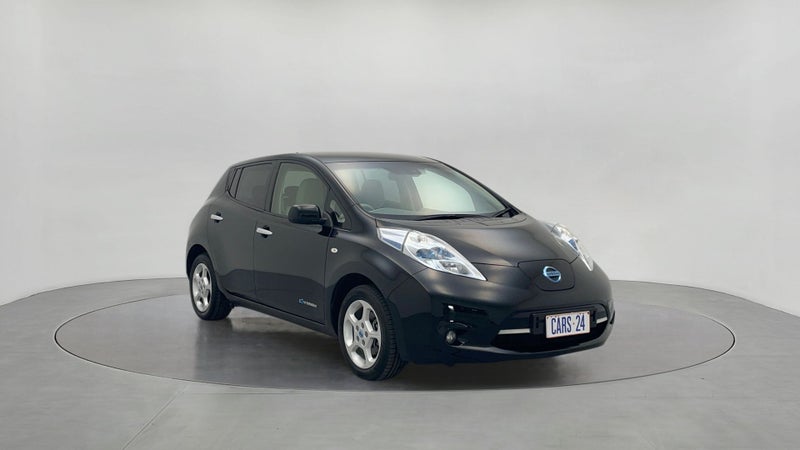
After the successful launch of its first iteration, Nissan swiftly adapted and introduced a more compelling option with the second-generation Leaf. This sizeable five-door hatchback, though compact on the outside, offers a sprawling interior space akin to a midsize car. It made its debut in 2019, targeting the entry-level segment of the electric vehicle (EV) market.
While the term "entry-level" is relative, the Leaf's pricing aligns it closer to petrol-powered mid-sized cars, which often come with more equipment or a more prestigious badge. Nevertheless, the Leaf boasts notable features such as lively acceleration and a premium Bose sound system. The pricier Leaf e+ variant comes with a larger battery, providing increased power output and a greater driving range between charges.
Key Features of Nissan Leaf:
What’s good about it?
- Standard DC fast charging
- Charging cable included
- Reliable
What’s not so good about it?
- No Apple CarPlay or Android Auto
- No heated seats
- No all-wheel drive
Check out our collection of used Nissan Leaf cars in Australia.
4. Hyundai Kona Electric

If you prioritize range, the Kona Electric is a compelling choice. It boasts an official claimed range of 484 km based on the more realistic European WLTP measurement, and in everyday driving, it can easily exceed 400 km. Notably, the Kona Electric's onboard range predictor does an excellent job of keeping you well-informed about the remaining battery life and when you might need to recharge.
In 2021, Hyundai introduced a slightly less powerful Standard Range model with a smaller battery, resulting in a reduced range of 305km. In terms of design, the Kona Electric closely resembles its petrol-powered counterpart. It shares the same compact SUV body as the regular Kona, which is available at approximately half the price.
Key Features of Hyundai Kona Electric:
What’s good about it?
- Long range
- Quick acceleration
- Comfortable ride
What’s not so good about it?
- Pricey
- Limited availability
- No all-wheel drive
Check out our collection of used Hyundai cars in Australia.
5. Jaguar I-Pace

The Jaguar I-Pace, an electric SUV, was a groundbreaking vehicle ahead of its time. Unlike its luxury counterparts that converted existing models to electric power, Jaguar designed the I-Pace from scratch, strategically placing batteries and electric motors for optimal performance. This unique approach resulted in distinctive design elements, including the aerodynamic bonnet with a characteristic Jaguar appearance.
The I-Pace offers a remarkable combination of spaciousness, exhilarating electric performance, and even hints of off-road capability. While its road-focused tires and modern interior may not seem fit for dusty adventures, the I-Pace excels in delivering sleek on-road manners that appeal to discerning buyers.
Key Features of Jaguar I-Pace:
What’s good about it?
- Luxury interior
- Quick acceleration
- Long range
What’s not so good about it?
- Pricey
- Limited availability
- No all-wheel drive
Check out our collection of used Jaguar cars in Australia.
6. BMW i3
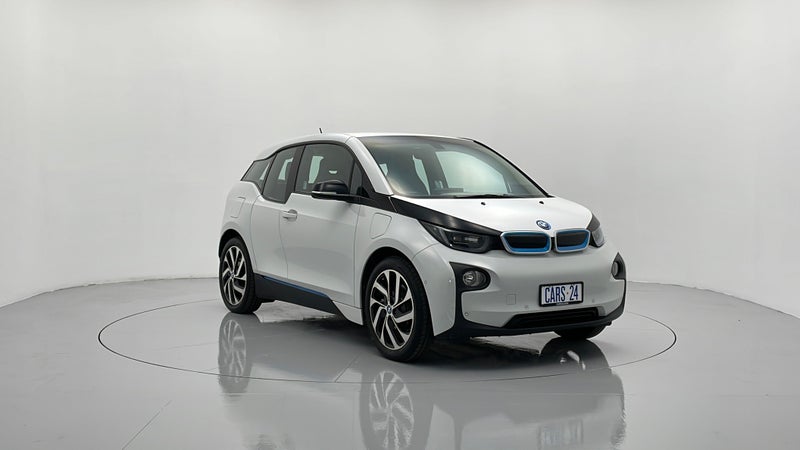
The i3's appeal lies in its pioneering use of materials. Open the doors, and you'll notice carbon fiber, the primary material used in the body, a manufacturing feat for a compact city hatchback. The dashboard and door interiors are trimmed with recycled materials that lend a unique personality to BMW's first urban electric vehicle.
While the i3 was available with a range extender option utilizing a small two-cylinder engine to charge the batteries for extended journeys, it is the pure electric version that captivates most. With increasing battery capacities, newer iterations offer greater range between charges. BMW's measurement of battery capacity in amp-hours instead of kilowatt-hours follows the same principle: the higher the number, the better.
Key Features of BMW i3:
What’s good about it?
- Electric Efficiency
- Lightweight Construction
- Agile City Driving
What’s not so good about it?
- Limited Range for Longer Trips
- Limited Interior Space
- Higher Price Tag
Check out our collection of used BMW i3 cars in Australia.
7. Hyundai Ioniq
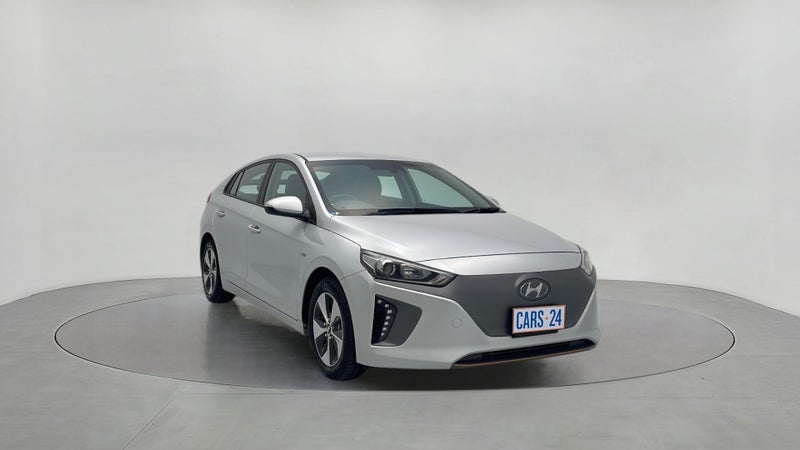
The Ioniq, not to be confused with the Ioniq 5 or Ioniq 6, marks Hyundai's early foray into electric vehicles, although it is also available as a hybrid and plug-in hybrid. While its range may be limited (officially claimed at up to 311 km), the Ioniq compensates with an attractive price tag, positioning itself as one of the more affordable pure electric vehicles on the market.
In terms of performance, the single electric motor powering the front wheels delivers modest acceleration, surpassing many petrol-powered city cars. However, Ioniq's handling is more focused on daily commuting rather than stirring up driving excitement. Inside the cabin, the Ioniq boasts a simple design complemented by leather upholstery, a digital instrument cluster, and push-button gear selectors, adding some sophistication to its basic interior.
Key Features of Hyundai Ioniq:
What’s good about it?
- Affordable
- Good range
- Comfortable ride
What’s not so good about it?
- Not as quick as some rivals
- Small trunk
- Limited charging infrastructure
Check out our collection of used Hyundai Ioniq cars in Australia.
8. Mercedes-Benz EQC

Mercedes-Benz enters the electric vehicle market with its first offering targeted at the lucrative midsize luxury SUV segment: the EQC400. Sharing some body components with the mainstream GLC model, the EQC400 boasts a similar size but carries additional weight due to its battery pack, which provides an impressive electric range of 417 km.
The EQC stands out further with its unique suspension system, featuring traditional coil springs at the front and an air suspension setup at the rear. This configuration prioritizes smoothness over bumps, providing a refined and comfortable ride. The EQC also impresses with its high equipment levels, boasting features such as electrically adjustable heated seats, an electric tailgate, ambient lighting, smart key entry, and blind spot monitoring.
Key Features of Mercedes-Benz EQC:
What’s good about it?
- Luxury interior
- Quick acceleration
- Long range
What’s not so good about it?
- Pricey
- Limited availability
- No all-wheel drive
Check out our collection of used Mercedes Benz cars in Australia.
9. Audi Q8 e-Tron

Prepare to become familiar with the e-Tron name as Audi's EV sub-brand is set to expand into a full lineup, featuring models like the e-Tron GT and e-Tron Q4 and the Q8. The e-Tron is available in two versions: the 50 and the more powerful 55, which boasts a longer electric range. Engaging the Sport mode enhances the peak power slightly, adding an extra touch of excitement to the driving dynamics.
The e-Tron not only excels in power and performance but also offers a well-rounded driving experience. It combines plushness and comfort to absorb bumps on the road while maintaining a level of grip and agility that truly shines on winding roads. With its spacious interior, impressive power, and enjoyable handling, the Audi e-Tron proves to be a compelling choice for those seeking an electric SUV that delivers both excitement and practicality.
Key Features of Audi Q8 e-Tron:
What’s good about it?
- Luxury
- Performance
- Range
What’s not so good about it?
- Pricey
- Limited availability
- No third-row seating
Check out our collection of used Audi cars in Australia.
10. Mini L56 Electric
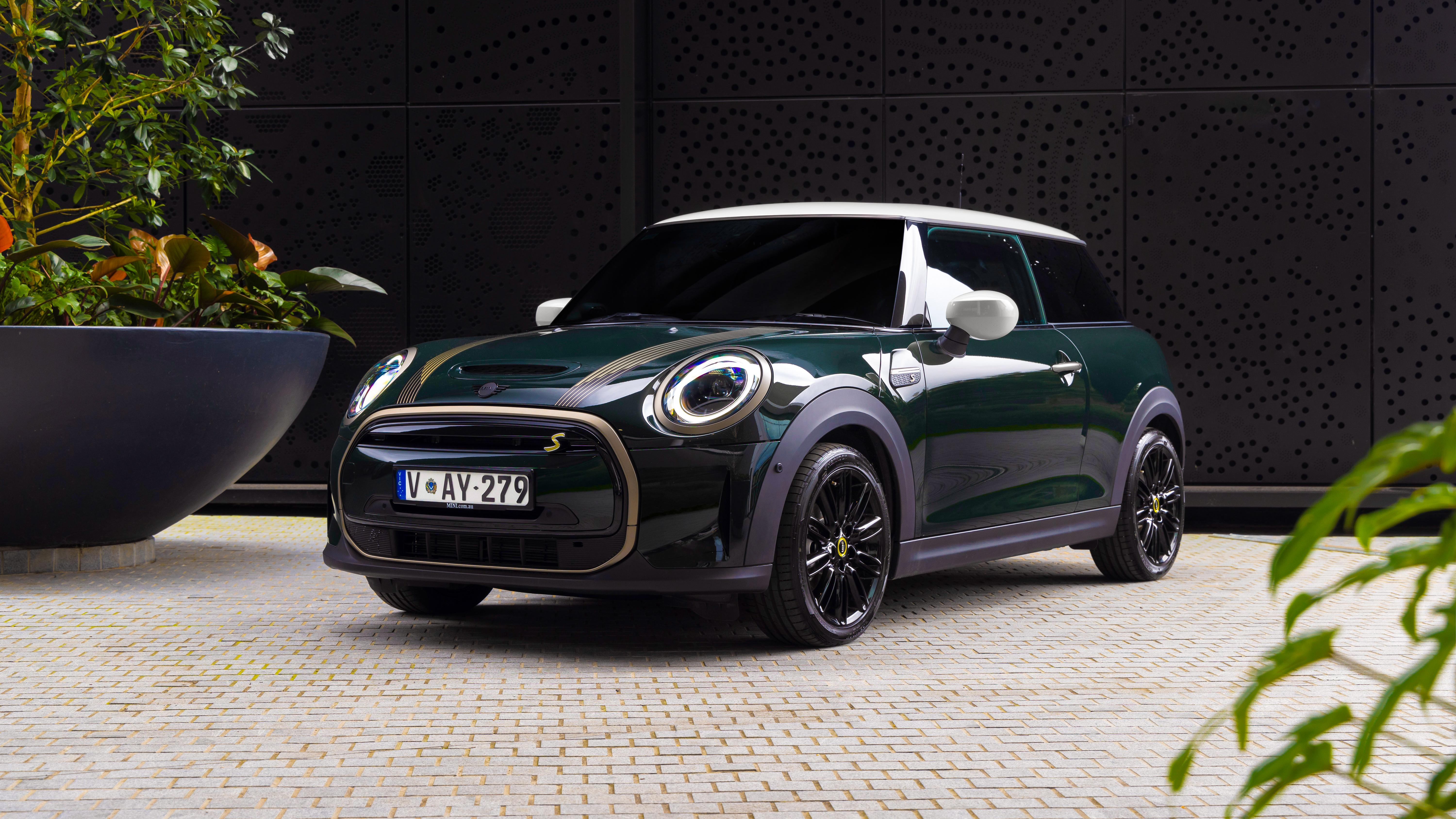
The Mini Electric follows a simple and loveable formula: take a Mini Hatch, swap out the engine and gearbox for batteries and an electric motor. Despite its retro-inspired Mini charm, the Electric model incorporates some electric-themed details like stylized "e" logos and a futuristic-looking grille.
In terms of performance, the Mini Electric offers modest power, and its electric driving range is also limited. It seems that the Mini Electric is more focused on checking the box for electric vehicle enthusiasts rather than pushing the boundaries of electric mobility.
However, the Mini Electric still manages to deliver the enjoyable and fun-filled driving experience that is synonymous with the Mini brand. While it may not revolutionize the world of electric mobility (Mini has more ambitious plans in that regard), it provides an opportunity for Mini enthusiasts to enjoy emissions-free driving in their beloved Mini cars.
Key Features of Mini L56 Electric:
What’s good about it?
- Affordable
- Fun to drive
- Charging
What’s not so good about it?
- Small interior
- Limited cargo space
- No all-wheel drive
Check out our collection of used Mini cars in Australia.
Conclusion
Owning an electric vehicle (EV) in Australia is becoming increasingly popular, as the country's charging infrastructure continues to improve. There are now a number of different EV models available in Australia, from small city cars to large SUVs.
There are a number of benefits to owning an EV in Australia. However, there are also some challenges to owning an EV in Australia. First, the range of EVs is still limited compared to petrol or diesel cars. Second, the charging infrastructure in Australia is still developing. There are a number of public charging stations available, but they are not as widespread as petrol stations. This can make it difficult to find a charging station when you need one.
Overall, owning an EV in Australia is a great way to save money and reduce your environmental impact. However, it is important to be aware of the challenges before you make the switch.
FAQs
1. What should I consider when looking for an electric car in Australia?
When looking for an electric car in Australia, consider factors such as range, charging infrastructure, available models, and government incentives for electric vehicles.
2. How much should I expect to pay for an electric car in Australia?
The price of an electric car in Australia can vary depending on the brand and model, ranging from affordable options to higher-end luxury vehicles. Generally, prices start around $30,000 and can go up to over $100,000.
3. What are some of the most popular electric car brands in Australia?
Popular electric car brands in Australia include Tesla, Nissan, Hyundai, BMW, and Mitsubishi, among others. Each brand offers a range of models with different features and price points.
4. How far can I expect to drive on a single charge in an electric car in Australia?
The range of an electric car in Australia can vary widely depending on the model. Entry-level electric cars typically offer around 150-200 kilometres of range, while higher-end models can go over 400 kilometres on a single charge.
5. Are there any incentives for buying an electric car in Australia?
Australia offers various incentives for buying an electric car, such as federal tax credits, state-based rebates, and exemptions from certain taxes and charges. These incentives aim to encourage the adoption of electric vehicles and reduce emissions.
Owning an electric vehicle (EV) in Australia is becoming increasingly popular, as the country's charging infrastructure continues to improve. There are now a number of different EV models available in Australia, from small city cars to large SUVs. There are a number of benefits to owning an EV in Australia. First, EVs are much cheaper to run than petrol or diesel cars. The cost of electricity is much lower than the cost of fuel, and EVs also produce zero emissions, which can save you money on fuel excise.
A greener alternative is being preferred by all – albeit from a low base - and there are dozens of new models due soon. However, there are also plenty of best electric cars on sale right now, giving consumers a viable alternative to petrol and diesel powered cars that have kept us on the move. We have a list of the 10 best electric cars in Australia.
1. Tesla Model 3

The Tesla Model 3, introduced in 2019, has quickly become the best-selling electric vehicle in Australia. Its popularity can be attributed to its competitive pricing, enjoyable driving experience, and innovative features that showcase the Tesla brand's wow factor. From customizable indicators that can produce amusing sounds to using your smartphone as a key, the Model 3 is not just a means of transportation but also a technological marvel.
One of the Model 3's strengths is its simplicity in the world of electric vehicles. Tesla owners have access to a comprehensive charging network, tailored specifically for them, along with a practical driving range of at least 400 kilometres. The Model 3 is offered in three variants, each at different price points. The base Standard Range Plus is rear-wheel drive, while the Long Range and Performance versions feature all-wheel drive capabilities, thanks to an additional electric motor. Regardless of the variant, the Model 3 delivers exhilarating acceleration that will leave you thrilled when you step on the accelerator.
Key Features of Tesla Model 3:
What’s good about it?
- Long range
- Quick acceleration
- Tech-rich interior
What’s not so good about it?
- Pricey
- Limited availability
- No physical buttons
2. Tesla Model S

Over the years, the Model S has gone through various iterations, with different battery capacities and performance characteristics. Initially, the model name reflected the battery size and speed, but Tesla has now adopted more explicit nomenclatures like Long Range and Performance. However, one aspect has remained consistent: all Model S versions offer impressive electric range and exhilarating acceleration that can rival luxury competitors relying on V8 engines.
Certain versions of the Model S are particularly breathtaking, especially with the inclusion of Tesla's Ludicrous mode, which unlocks the full potential of its acceleration. Like other Tesla vehicles, the Model S receives over-the-air software updates that enhance functionality and introduce new features, similar to how smartphones update their apps.
Key Features of Tesla Model S:
What’s good about it?
- Luxury interior
- Long range
- Quick acceleration
What’s not so good about it?
- No Apple CarPlay or Android Auto
- Small trunk
- Limited service network
3. Nissan Leaf

After the successful launch of its first iteration, Nissan swiftly adapted and introduced a more compelling option with the second-generation Leaf. This sizeable five-door hatchback, though compact on the outside, offers a sprawling interior space akin to a midsize car. It made its debut in 2019, targeting the entry-level segment of the electric vehicle (EV) market.
While the term "entry-level" is relative, the Leaf's pricing aligns it closer to petrol-powered mid-sized cars, which often come with more equipment or a more prestigious badge. Nevertheless, the Leaf boasts notable features such as lively acceleration and a premium Bose sound system. The pricier Leaf e+ variant comes with a larger battery, providing increased power output and a greater driving range between charges.
Key Features of Nissan Leaf:
What’s good about it?
- Standard DC fast charging
- Charging cable included
- Reliable
What’s not so good about it?
- No Apple CarPlay or Android Auto
- No heated seats
- No all-wheel drive
Check out our collection of used Nissan Leaf cars in Australia.
4. Hyundai Kona Electric

If you prioritize range, the Kona Electric is a compelling choice. It boasts an official claimed range of 484 km based on the more realistic European WLTP measurement, and in everyday driving, it can easily exceed 400 km. Notably, the Kona Electric's onboard range predictor does an excellent job of keeping you well-informed about the remaining battery life and when you might need to recharge.
In 2021, Hyundai introduced a slightly less powerful Standard Range model with a smaller battery, resulting in a reduced range of 305km. In terms of design, the Kona Electric closely resembles its petrol-powered counterpart. It shares the same compact SUV body as the regular Kona, which is available at approximately half the price.
Key Features of Hyundai Kona Electric:
What’s good about it?
- Long range
- Quick acceleration
- Comfortable ride
What’s not so good about it?
- Pricey
- Limited availability
- No all-wheel drive
Check out our collection of used Hyundai cars in Australia.
5. Jaguar I-Pace

The Jaguar I-Pace, an electric SUV, was a groundbreaking vehicle ahead of its time. Unlike its luxury counterparts that converted existing models to electric power, Jaguar designed the I-Pace from scratch, strategically placing batteries and electric motors for optimal performance. This unique approach resulted in distinctive design elements, including the aerodynamic bonnet with a characteristic Jaguar appearance.
The I-Pace offers a remarkable combination of spaciousness, exhilarating electric performance, and even hints of off-road capability. While its road-focused tires and modern interior may not seem fit for dusty adventures, the I-Pace excels in delivering sleek on-road manners that appeal to discerning buyers.
Key Features of Jaguar I-Pace:
What’s good about it?
- Luxury interior
- Quick acceleration
- Long range
What’s not so good about it?
- Pricey
- Limited availability
- No all-wheel drive
Check out our collection of used Jaguar cars in Australia.
6. BMW i3

The i3's appeal lies in its pioneering use of materials. Open the doors, and you'll notice carbon fiber, the primary material used in the body, a manufacturing feat for a compact city hatchback. The dashboard and door interiors are trimmed with recycled materials that lend a unique personality to BMW's first urban electric vehicle.
While the i3 was available with a range extender option utilizing a small two-cylinder engine to charge the batteries for extended journeys, it is the pure electric version that captivates most. With increasing battery capacities, newer iterations offer greater range between charges. BMW's measurement of battery capacity in amp-hours instead of kilowatt-hours follows the same principle: the higher the number, the better.
Key Features of BMW i3:
What’s good about it?
- Electric Efficiency
- Lightweight Construction
- Agile City Driving
What’s not so good about it?
- Limited Range for Longer Trips
- Limited Interior Space
- Higher Price Tag
Check out our collection of used BMW i3 cars in Australia.
7. Hyundai Ioniq

The Ioniq, not to be confused with the Ioniq 5 or Ioniq 6, marks Hyundai's early foray into electric vehicles, although it is also available as a hybrid and plug-in hybrid. While its range may be limited (officially claimed at up to 311 km), the Ioniq compensates with an attractive price tag, positioning itself as one of the more affordable pure electric vehicles on the market.
In terms of performance, the single electric motor powering the front wheels delivers modest acceleration, surpassing many petrol-powered city cars. However, Ioniq's handling is more focused on daily commuting rather than stirring up driving excitement. Inside the cabin, the Ioniq boasts a simple design complemented by leather upholstery, a digital instrument cluster, and push-button gear selectors, adding some sophistication to its basic interior.
Key Features of Hyundai Ioniq:
What’s good about it?
- Affordable
- Good range
- Comfortable ride
What’s not so good about it?
- Not as quick as some rivals
- Small trunk
- Limited charging infrastructure
Check out our collection of used Hyundai Ioniq cars in Australia.
8. Mercedes-Benz EQC

Mercedes-Benz enters the electric vehicle market with its first offering targeted at the lucrative midsize luxury SUV segment: the EQC400. Sharing some body components with the mainstream GLC model, the EQC400 boasts a similar size but carries additional weight due to its battery pack, which provides an impressive electric range of 417 km.
The EQC stands out further with its unique suspension system, featuring traditional coil springs at the front and an air suspension setup at the rear. This configuration prioritizes smoothness over bumps, providing a refined and comfortable ride. The EQC also impresses with its high equipment levels, boasting features such as electrically adjustable heated seats, an electric tailgate, ambient lighting, smart key entry, and blind spot monitoring.
Key Features of Mercedes-Benz EQC:
What’s good about it?
- Luxury interior
- Quick acceleration
- Long range
What’s not so good about it?
- Pricey
- Limited availability
- No all-wheel drive
Check out our collection of used Mercedes Benz cars in Australia.
9. Audi Q8 e-Tron

Prepare to become familiar with the e-Tron name as Audi's EV sub-brand is set to expand into a full lineup, featuring models like the e-Tron GT and e-Tron Q4 and the Q8. The e-Tron is available in two versions: the 50 and the more powerful 55, which boasts a longer electric range. Engaging the Sport mode enhances the peak power slightly, adding an extra touch of excitement to the driving dynamics.
The e-Tron not only excels in power and performance but also offers a well-rounded driving experience. It combines plushness and comfort to absorb bumps on the road while maintaining a level of grip and agility that truly shines on winding roads. With its spacious interior, impressive power, and enjoyable handling, the Audi e-Tron proves to be a compelling choice for those seeking an electric SUV that delivers both excitement and practicality.
Key Features of Audi Q8 e-Tron:
What’s good about it?
- Luxury
- Performance
- Range
What’s not so good about it?
- Pricey
- Limited availability
- No third-row seating
Check out our collection of used Audi cars in Australia.
10. Mini L56 Electric

The Mini Electric follows a simple and loveable formula: take a Mini Hatch, swap out the engine and gearbox for batteries and an electric motor. Despite its retro-inspired Mini charm, the Electric model incorporates some electric-themed details like stylized "e" logos and a futuristic-looking grille.
In terms of performance, the Mini Electric offers modest power, and its electric driving range is also limited. It seems that the Mini Electric is more focused on checking the box for electric vehicle enthusiasts rather than pushing the boundaries of electric mobility.
However, the Mini Electric still manages to deliver the enjoyable and fun-filled driving experience that is synonymous with the Mini brand. While it may not revolutionize the world of electric mobility (Mini has more ambitious plans in that regard), it provides an opportunity for Mini enthusiasts to enjoy emissions-free driving in their beloved Mini cars.
Key Features of Mini L56 Electric:
What’s good about it?
- Affordable
- Fun to drive
- Charging
What’s not so good about it?
- Small interior
- Limited cargo space
- No all-wheel drive
Check out our collection of used Mini cars in Australia.
Conclusion
Owning an electric vehicle (EV) in Australia is becoming increasingly popular, as the country's charging infrastructure continues to improve. There are now a number of different EV models available in Australia, from small city cars to large SUVs.
There are a number of benefits to owning an EV in Australia. However, there are also some challenges to owning an EV in Australia. First, the range of EVs is still limited compared to petrol or diesel cars. Second, the charging infrastructure in Australia is still developing. There are a number of public charging stations available, but they are not as widespread as petrol stations. This can make it difficult to find a charging station when you need one.
Overall, owning an EV in Australia is a great way to save money and reduce your environmental impact. However, it is important to be aware of the challenges before you make the switch.
FAQs
1. What should I consider when looking for an electric car in Australia?
When looking for an electric car in Australia, consider factors such as range, charging infrastructure, available models, and government incentives for electric vehicles.
2. How much should I expect to pay for an electric car in Australia?
The price of an electric car in Australia can vary depending on the brand and model, ranging from affordable options to higher-end luxury vehicles. Generally, prices start around $30,000 and can go up to over $100,000.
3. What are some of the most popular electric car brands in Australia?
Popular electric car brands in Australia include Tesla, Nissan, Hyundai, BMW, and Mitsubishi, among others. Each brand offers a range of models with different features and price points.
4. How far can I expect to drive on a single charge in an electric car in Australia?
The range of an electric car in Australia can vary widely depending on the model. Entry-level electric cars typically offer around 150-200 kilometres of range, while higher-end models can go over 400 kilometres on a single charge.
5. Are there any incentives for buying an electric car in Australia?
Australia offers various incentives for buying an electric car, such as federal tax credits, state-based rebates, and exemptions from certain taxes and charges. These incentives aim to encourage the adoption of electric vehicles and reduce emissions.
















